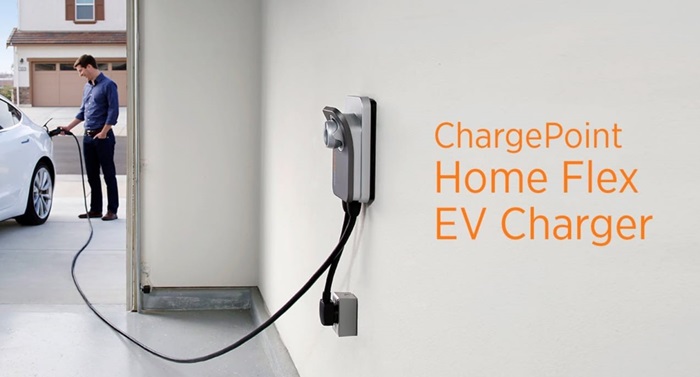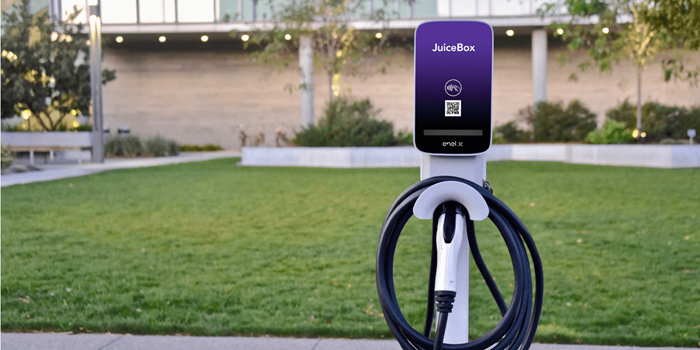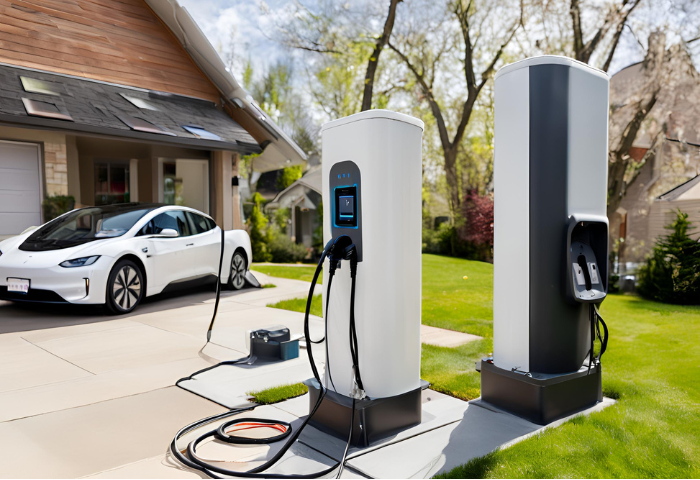tesla charger for homePower Up Your Tesla at Home: Exploring Tesla Wall Charger Optionstesla charger for home
Discover the convenience of charging your Tesla at home with our comprehensive guide to Tesla wall charger options. Explore installation considerations, costs, and benefits to power up your Tesla effortlessly.
How to Install a Tesla charger at home
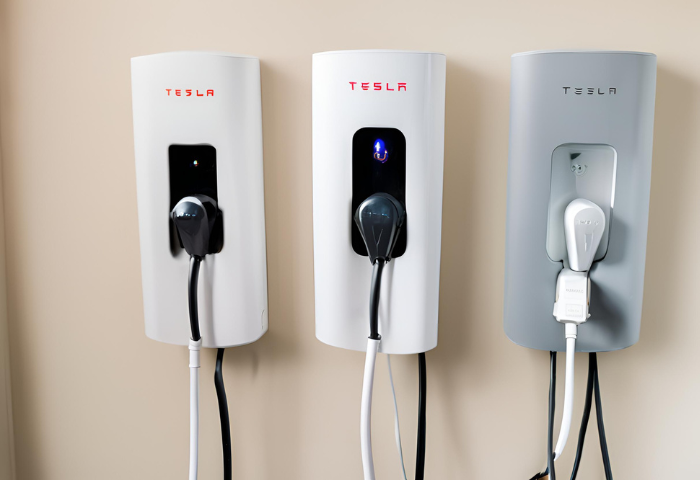
Check compatibility: Ensure that your home’s electrical system can support the installation of a Tesla charger. You may need to consult with an electrician to assess your electrical setup and determine compatibility.
Choose a location: Select a suitable location for the charger. It should be easily accessible for your vehicle and preferably near your electrical panel to minimize installation costs.
Purchase the charger: Obtain the Tesla Wall Connector or Tesla Mobile Connector. The Wall Connector is a faster charging option and is typically installed permanently on a wall, while the Mobile Connector offers flexibility and can be plugged into various outlets.
Hire a qualified electrician: Unless you have experience with electrical work, it’s essential to hire a licensed electrician to install the charger. They will ensure that the installation meets local building codes and safety standards.
Obtain necessary permits: Depending on your local regulations, you may need to obtain permits before installing the charger. Your electrician can help with this process.
Install the charger: The electrician will install the charger according to Tesla’s installation guidelines and the specifications of your home’s electrical system. This typically involves mounting the charger, running wiring from the electrical panel to the charger location, and making the necessary electrical connections.
Test the charger: Once the installation is complete, the electrician will test the charger to ensure it’s functioning correctly and safely.
Optional: Set up a dedicated circuit: To optimize charging speed and prevent overloading your electrical system, consider installing a dedicated circuit for the charger. This involves running a separate electrical line from the panel to the charger.
Register the charger: After installation, you may need to register the charger with Tesla to activate any warranties or service agreements.
Enjoy charging your Tesla: With the charger installed and operational, you can now enjoy the convenience of charging your Tesla at home. Be sure to follow Tesla’s recommendations for charging and maintenance to maximize the lifespan of your vehicle’s battery.
Cost considerations for installing a Tesla charger at home
The cost of installing a Tesla charger at home can vary depending on several factors:
Type of charger: The cost will differ depending on whether you choose a Tesla Wall Connector or a Tesla Mobile Connector. The Wall Connector tends to be more expensive upfront but may offer faster charging speeds. The Mobile Connector is generally cheaper but may be less convenient for daily use.
Electrical work: The cost of electrical work will depend on the complexity of the installation. Factors such as the distance from the electrical panel to the charging location, the need for additional wiring or circuitry, and any upgrades required to your electrical system will impact the overall cost. Hiring a licensed electrician is essential for ensuring the installation is done safely and up to code.
Permits and inspections: Depending on your local regulations, you may need to obtain permits for the installation of the charger. Permit fees and inspection costs can add to the overall expense.
Dedicated circuit: If your home’s electrical system cannot support the charger without overloading, you may need to install a dedicated circuit. This involves running a separate electrical line from the panel to the charger location, which can increase the installation cost.
Location: The accessibility of the installation location can affect the cost. If the charger needs to be installed in a hard-to-reach area or requires additional construction work, such as drilling through walls or installing conduit, the installation cost may be higher.
Additional features: Depending on your preferences and needs, you may opt for additional features such as cable management systems, surge protection devices, or smart charging capabilities. These features can add to the overall cost of the installation.
Warranty and service: Some installation providers may offer warranties or service agreements for the charger installation. Be sure to factor in any additional costs associated with these offerings.
Best practices for maintaining a Tesla charger at home
Maintaining a Tesla charger at home involves a few simple yet essential best practices to ensure optimal performance and safety:
Regular inspection: Periodically inspect the charger for any signs of damage, wear, or corrosion. Check the cables, connectors, and housing for any cracks, fraying, or other abnormalities. If you notice any issues, contact a qualified technician for inspection and repairs.
Keep it clean: Keep the charger and its surroundings clean and free from debris, dust, and moisture. Use a soft cloth to wipe down the charger and avoid using harsh chemicals or abrasive materials that could damage the surface.
Protect from extreme weather: If the charger is installed outdoors, consider using a weatherproof cover to protect it from rain, snow, and extreme temperatures. Additionally, ensure that the electrical connections are properly sealed to prevent water ingress.
Avoid overloading: Be mindful of the electrical load on the circuit that powers the charger. Avoid connecting additional high-powered appliances or devices to the same circuit to prevent overloading and potential overheating. Consider installing a dedicated circuit for the charger if needed.
Monitor charging sessions: Keep an eye on your Tesla’s charging sessions through the Tesla mobile app or vehicle display. Monitor charging speed, battery status, and any error messages or notifications related to charging. If you notice any unusual behavior, investigate and address the issue promptly.
Follow manufacturer guidelines: Adhere to Tesla’s recommendations and guidelines for charging your vehicle. This includes using the appropriate charging accessories, following recommended charging schedules, and avoiding practices that could degrade the battery or charger performance.
Schedule maintenance: Consider scheduling regular maintenance checks for the charger, especially if it’s heavily used or installed in a harsh environment. A qualified technician can inspect the charger, perform any necessary maintenance tasks, and ensure it’s operating safely and efficiently.
Update firmware: If your Tesla charger includes firmware or software updates, make sure to install them as recommended by the manufacturer. Firmware updates may include performance improvements, bug fixes, and security enhancements to keep your charger up to date.
Comparison of different Tesla charger models for home use
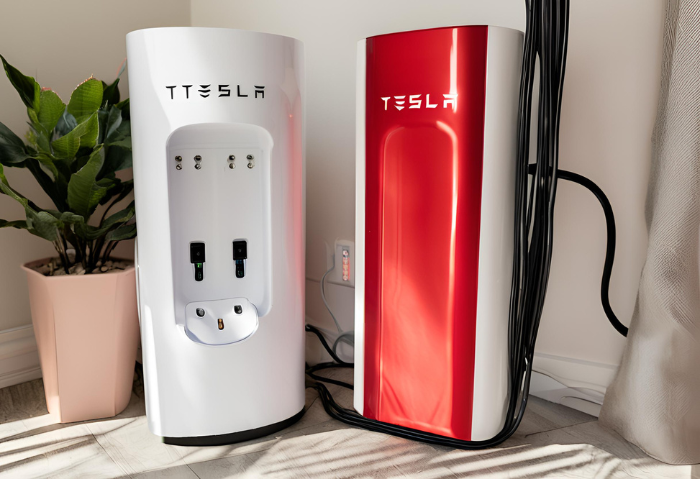
Benefits of having a Tesla charger at home
Having a Tesla charger at home offers numerous benefits, including:
Convenience: One of the primary advantages of having a Tesla charger at home is the convenience it offers. You can charge your Tesla whenever it’s parked at home without needing to visit public charging stations or gas stations. This convenience saves time and effort, especially for daily charging needs.
Cost savings: Charging your Tesla at home is typically cheaper than using public charging stations or gasoline. Home electricity rates are often lower, especially during off-peak hours, resulting in cost savings over time. Additionally, you can take advantage of utility programs and incentives to further reduce charging costs.
Flexibility: With a Tesla charger at home, you have the flexibility to customize your charging schedule to suit your lifestyle and preferences. You can easily top up your vehicle’s battery overnight or during times when electricity rates are lower, maximizing convenience and savings.
Faster charging: Tesla chargers, especially the Wall Connector, can provide faster charging speeds compared to standard household outlets or public charging stations. This allows you to recharge your Tesla more quickly, reducing downtime and ensuring your vehicle is ready to go when you need it.
Reliability: Having a dedicated Tesla charger at home ensures reliable access to charging, regardless of external factors such as charger availability, network outages, or inclement weather. You can rest assured knowing that your vehicle is always ready for your next journey.
Environmental benefits: By charging your Tesla at home with electricity from renewable sources or low-carbon energy sources, you can reduce your carbon footprint and contribute to environmental sustainability. Electric vehicles charged with clean energy have lower greenhouse gas emissions compared to traditional gasoline-powered vehicles.
Increased home value: Installing a Tesla charger at home can enhance the value of your property, especially as electric vehicles become more popular. Homebuyers may view a home with a charging infrastructure as more desirable and future-proof, potentially increasing its resale value.
Comparison of different Tesla charger models for home use
Sure, here’s a simplified comparison table of the two main Tesla charger models for home use:
| Feature | Tesla Wall Connector | Tesla Mobile Connector |
| Charging Speed | Faster charging speeds (up to 44 miles of range per hour) | Slower charging speeds (typically 2-3 miles of range per hour) |
| Installation | Requires professional installation | Plug-and-play, no professional installation required |
| Portability | Fixed installation, not portable | Portable, can be used with various outlets |
| Compatibility | Compatible with all Tesla vehicles | Compatible with all Tesla vehicles |
| Design | Sleek, minimalist design with weatherproof enclosure | N/A |
| Ease of Use | Permanent installation, always ready for use | Portable, requires connection to electrical outlet |
| Flexibility | Less portable, dedicated charging location | Portable, can be used at different locations or when traveling |
| Cost | Generally more expensive upfront | Generally less expensive upfront |
| Additional Features | Option for cable length customization | Includes adapters for different outlet types |
| Use Cases | Ideal for homeowners prioritizing charging speed and convenience | Suitable for occasional or travel charging, flexibility in charging location |
This table provides a basic comparison of the key features and characteristics of the Tesla Wall Connector and Tesla Mobile Connector for home charging. Keep in mind that individual preferences, charging needs, and budget considerations may influence the choice between the two models.
Environmental impact of using a Tesla charger at home
Using a Tesla charger at home can have several environmental impacts, both direct and indirect, that are generally positive when compared to traditional gasoline-powered vehicles:
Reduced greenhouse gas emissions: Charging a Tesla at home typically results in lower greenhouse gas emissions compared to driving a gasoline-powered vehicle. This is especially true if the electricity used for charging comes from renewable sources such as solar, wind, or hydroelectric power. Even when using electricity from the grid, electric vehicles have lower emissions per mile traveled compared to internal combustion engine vehicles, primarily due to the higher efficiency of electric motors and the decreasing carbon intensity of electricity generation.
Decreased air pollution: Electric vehicles produce zero tailpipe emissions, which helps reduce air pollution in urban areas and improve local air quality. By charging a Tesla at home instead of refueling at gas stations, you contribute to lower levels of harmful pollutants such as nitrogen oxides, particulate matter, and volatile organic compounds.
Energy efficiency: Electric vehicles are more energy-efficient than gasoline-powered vehicles, as they convert a higher percentage of the energy stored in their batteries into motion. Additionally, electric motors are inherently more efficient than internal combustion engines, which waste energy through heat and friction. By using a Tesla charger at home, you’re making use of this energy-efficient technology for your daily transportation needs.
Promotion of renewable energy: Many Tesla owners choose to power their chargers with renewable energy sources such as solar panels. By generating electricity on-site and using it to charge their vehicles, homeowners can further reduce their carbon footprint and dependence on fossil fuels. This promotes the growth of renewable energy infrastructure and contributes to the transition to a more sustainable energy system.
Reduced dependence on oil: Electric vehicles, including Tesla models, reduce the need for petroleum-based fuels, which helps decrease reliance on imported oil and enhances energy security. By shifting transportation energy demand from oil to electricity, countries can diversify their energy sources and reduce geopolitical tensions associated with oil production and distribution.
importance of certifications for Tesla chargers for home use
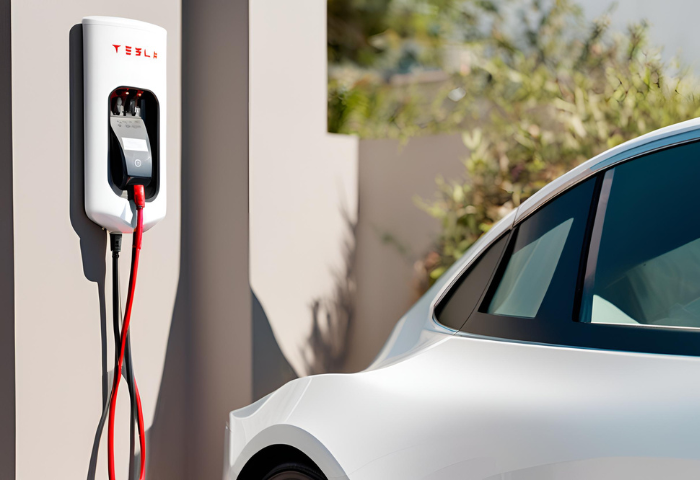
Understanding EV charging terminology for home chargers
Understanding EV charging terminology for home chargers is essential for effectively managing and optimizing your electric vehicle charging experience. Here are some key terms:
EVSE (Electric Vehicle Supply Equipment): EVSE refers to the equipment used to supply electricity to electric vehicles for charging. It includes components such as charging stations, connectors, cables, and control systems.
Level 1 Charging: Level 1 charging refers to charging your electric vehicle using a standard household electrical outlet (120 volts AC). It typically provides a slower charging rate, suitable for overnight charging or topping up a vehicle’s battery over an extended period.
Level 2 Charging: Level 2 charging involves using a dedicated charging station that connects to a 240-volt electrical circuit. Level 2 chargers provide faster charging rates compared to Level 1, making them more suitable for daily charging needs at home.
Charging Rate: The charging rate, often measured in kilowatts (kW), indicates how quickly an electric vehicle’s battery can be charged. Higher charging rates result in faster charging times.
Charge Connector: The charge connector is the physical interface used to connect the electric vehicle to the charging station. Common connector types include SAE J1772 (used in North America) and Type 2 (used in Europe).
Charging Cable: The charging cable is the cable that connects the charging station to the electric vehicle. It typically includes connectors on both ends for easy connection and disconnection.
Plug Type: The plug type refers to the specific design and configuration of the connector used to connect the charging cable to the electric vehicle. Different plug types are used in different regions and for different vehicle models.
Capacity: The capacity of a charging station refers to its maximum power output, usually measured in kilowatts (kW). Higher-capacity charging stations can provide faster charging rates and are suitable for charging multiple vehicles simultaneously.
Smart Charging: Smart charging refers to charging systems and technologies that enable communication between the electric vehicle, charging station, and grid infrastructure. Smart charging can optimize charging schedules, manage energy usage, and support grid stability.
Bi-Directional Charging: Bi-directional charging, also known as vehicle-to-grid (V2G) or vehicle-to-home (V2H) charging, allows electric vehicles to discharge stored energy back to the grid or power home appliances during peak demand periods. This technology can help balance energy supply and demand and provide backup power during outages.
Exploring the compatibility of Tesla chargers with different home electrical systems
Tesla chargers can be compatible with various home electrical systems, but the compatibility depends on several factors, including the charger model and the capacity of your home’s electrical infrastructure. Here’s a breakdown of compatibility considerations:
Voltage and Amperage: Tesla chargers typically require a 240-volt electrical supply for optimal performance. The amperage rating depends on the specific charger model. For example, the Tesla Wall Connector is available in different amperage options, such as 40 amps or 48 amps. Your home’s electrical panel and wiring must support the required voltage and amperage for the charger.
Circuit Capacity: The electrical circuit that powers the Tesla charger must have sufficient capacity to handle the charger’s power requirements. This includes factors such as the size of the circuit breaker, wire gauge, and overall electrical load on the circuit. If your home’s electrical system is not adequately sized, you may need to upgrade the circuit or install a dedicated circuit for the charger.
Electrical Panel Compatibility: Some older homes may have electrical panels that are not compatible with high-amperage charging equipment. It’s essential to have a qualified electrician assess your electrical panel to ensure it can safely support the installation of a Tesla charger. Upgrading the electrical panel may be necessary in some cases.
Outlet Compatibility: If you’re using the Tesla Mobile Connector, you’ll need to ensure that your home’s electrical outlets are compatible with the connector’s plug type and voltage requirements. The Mobile Connector comes with adapters for different outlet types, such as NEMA 5-15 (standard household outlet) or NEMA 14-50 (240-volt outlet).
Wiring and Installation: Proper installation of the Tesla charger is crucial for ensuring compatibility and safety. This includes correctly sizing the wiring, making secure electrical connections, and adhering to local building codes and regulations. Hiring a licensed electrician with experience in EV charger installations is recommended to ensure proper compatibility and compliance with electrical standards.
importance of certifications for Tesla chargers for home use
Certifications for Tesla chargers for home use are important for several reasons:
Safety: Certification ensures that the charger has undergone rigorous testing to meet safety standards established by regulatory authorities or independent certification organizations. This includes verification of electrical safety, fire resistance, and protection against electric shock hazards. Certified chargers undergo thorough testing to identify and mitigate potential safety risks, providing peace of mind to users.
Compatibility: Certification verifies that the charger meets industry standards for electrical performance and compatibility with electric vehicles. This includes adherence to specifications for voltage, amperage, connector types, and communication protocols. Certified chargers are designed to work reliably with Tesla vehicles and other electric vehicles, ensuring compatibility and interoperability across different charging systems.
Reliability: Certified chargers are built to high-quality standards and undergo testing to assess their durability, reliability, and performance under various operating conditions. Certification ensures that the charger is designed to withstand the rigors of daily use and can deliver consistent charging performance over time. This helps minimize the risk of malfunctions, breakdowns, or safety incidents that could disrupt charging operations or damage the vehicle.
Compliance: Certification demonstrates compliance with applicable regulatory requirements and industry standards for electric vehicle charging equipment. This includes regulations related to electrical safety, electromagnetic compatibility (EMC), energy efficiency, and environmental impact. Certified chargers meet legal requirements and regulatory mandates, reducing the risk of non-compliance penalties or liability issues for users and manufacturers.
Warranty and Support: Many manufacturers offer warranties and technical support for certified chargers, providing additional assurance of product quality and reliability. Certified chargers are typically backed by manufacturer warranties that cover defects in materials and workmanship, offering protection and support for users in the event of issues or failures.
Expert reviews on the best Tesla chargers for home installation
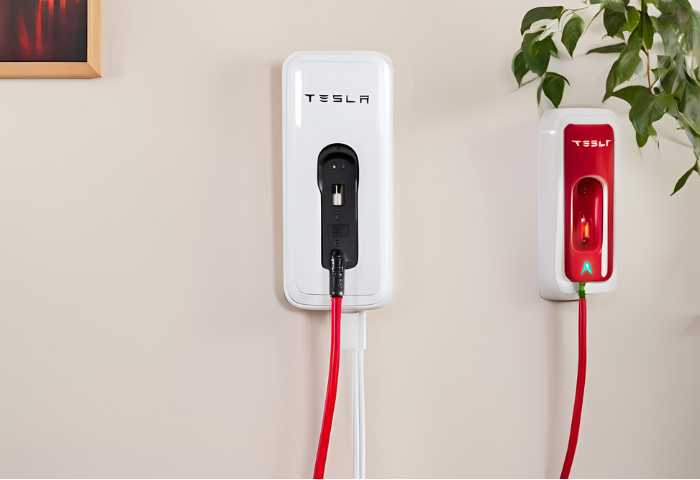
While there aren’t specific “expert reviews” on Tesla chargers for home installation in the same way there might be for consumer electronics or appliances, there are certainly resources and opinions available from various sources, including electric vehicle enthusiasts, Tesla owners, and industry professionals. Here are some factors to consider when evaluating Tesla chargers for home installation:
Charging Speed: Consider the charging speed offered by the charger. Tesla’s Wall Connector typically provides faster charging speeds compared to the Mobile Connector, making it suitable for homeowners who prioritize faster charging times.
Installation: Evaluate the ease of installation and whether professional installation is required. The Wall Connector typically requires professional installation, while the Mobile Connector is plug-and-play and can be easily connected to a standard electrical outlet.
Compatibility: Ensure that the charger is compatible with your Tesla vehicle model and home electrical system. Tesla’s chargers are designed to work seamlessly with all Tesla vehicles, but it’s essential to verify compatibility with your specific vehicle and electrical setup.
Features: Consider any additional features offered by the charger, such as cable length options, smart charging capabilities, energy monitoring, and integration with home automation systems. Choose a charger that best suits your preferences and needs.
Reliability and Durability: Look for chargers that are built to high-quality standards and have a reputation for reliability and durability. Read user reviews and testimonials to gauge the reliability of the charger over time.
Warranty and Support: Check the warranty and technical support offered by the manufacturer. Choose a charger that comes with a warranty covering defects in materials and workmanship, as well as reliable customer support in case of issues or questions.
Cost: Compare the cost of different chargers, including the initial purchase price and any additional installation or accessories required. Consider the long-term value and benefits provided by the charger in relation to its cost.
Regulations and permits required for installing a Tesla charger at home
Regulations and permits required for installing a Tesla charger at home can vary depending on your location, local building codes, and electrical regulations. However, there are several common considerations:
Building Codes: Check your local building codes and regulations to ensure compliance with requirements for electrical installations, structural modifications, and safety standards. Building codes may dictate specific requirements for wiring, circuit protection, mounting, and clearances for the charger installation.
Electrical Permits: In many jurisdictions, electrical permits are required for installing new electrical circuits, outlets, or equipment, including Tesla chargers. You may need to submit permit applications to your local building department and obtain approval before starting the installation. Permits ensure that the installation meets safety standards and is inspected by local authorities.
Licensed Electrician: Most jurisdictions require that electrical work, including Tesla charger installations, be performed by a licensed electrician. Hiring a qualified electrician ensures that the installation is done safely, up to code, and in compliance with local regulations. The electrician can also obtain necessary permits and coordinate inspections on your behalf.
Inspections: After the installation is complete, it may be subject to inspection by local building or electrical inspectors. Inspections verify that the installation meets code requirements and safety standards. Ensure that all necessary inspections are scheduled and conducted according to local regulations.
Homeowners Association (HOA) Approval: If you live in a community governed by a homeowners association (HOA), you may need to obtain approval from the HOA before installing a Tesla charger. Check your HOA’s rules and regulations regarding exterior modifications, electrical installations, and architectural guidelines.
Utility Approval: Depending on your utility provider, you may need to notify them of the charger installation or obtain approval for connecting the charger to the electrical grid. Some utilities offer programs or incentives for installing electric vehicle chargers and may provide guidance on the installation process.
Fire and Safety Regulations: Considerations for fire safety, such as proper mounting, electrical grounding, and clearances from combustible materials, may also apply to Tesla charger installations. Ensure that the installation complies with fire codes and safety regulations to minimize fire hazards.
User experiences and testimonials with Tesla chargers for home
User experiences and testimonials with Tesla chargers for home installations can provide valuable insights into the performance, reliability, and satisfaction levels of different charger models. While specific testimonials may vary depending on individual circumstances and preferences, here are some common themes and feedback from Tesla owners:
Convenience: Many Tesla owners appreciate the convenience of having a home charger, which allows them to charge their vehicles overnight or whenever they’re parked at home. The ability to start each day with a full charge without visiting public charging stations is often cited as a significant benefit.
Charging Speed: Users often highlight the fast charging speeds provided by Tesla’s Wall Connector, especially compared to standard household outlets. The ability to add significant range to the vehicle’s battery in a relatively short time is a major advantage for homeowners with busy lifestyles.
Ease of Use: Tesla chargers, particularly the Wall Connector, are praised for their user-friendly design and intuitive operation. Many users find the charging process straightforward, with features such as plug-in charging and automatic connector detection simplifying the experience.
Reliability: Tesla chargers are generally regarded as reliable and robust, with few reports of malfunctions or performance issues. Users appreciate the consistent charging performance and reliability of Tesla’s charging infrastructure, contributing to a positive ownership experience.
Installation Experience: While professional installation is typically required for the Wall Connector, users often report a smooth installation process with minimal disruption. Working with licensed electricians who are familiar with Tesla charger installations helps ensure proper setup and compliance with local regulations.
Integration with Tesla Vehicles: Tesla chargers seamlessly integrate with Tesla vehicles, providing real-time charging status and control through the vehicle’s touchscreen interface or the Tesla mobile app. Users appreciate the convenience of monitoring and managing charging sessions remotely.
Customer Support: Tesla owners often commend Tesla’s customer support for their responsiveness and assistance with charger-related inquiries or issues. Prompt resolution of technical questions, warranty claims, or service requests contributes to overall satisfaction with the charging experience.
Long-Term Satisfaction: Many Tesla owners express long-term satisfaction with their home charging setup, citing the convenience, cost savings, and environmental benefits of electric vehicle ownership. Home charging is often viewed as a fundamental aspect of the Tesla ownership experience, contributing to overall brand loyalty
Tesla chargers for home installations provide reliable, user-friendly, and efficient charging solutions that enhance the electric vehicle ownership experience.
With benefits such as convenience, cost savings, and environmental sustainability, home charging with Tesla chargers is an essential component of the transition to electric transportation.
Whether you’re looking for fast charging speeds or flexibility in charging location, Tesla has a charger option to meet your needs and support your electric lifestyle.

Henry Michael is a leading expert in EV charging station research, specializing in innovative solutions for electric vehicle infrastructure. With a passion for sustainability and technological advancement, he is dedicated to advancing the accessibility and efficiency of EV charging worldwide.

